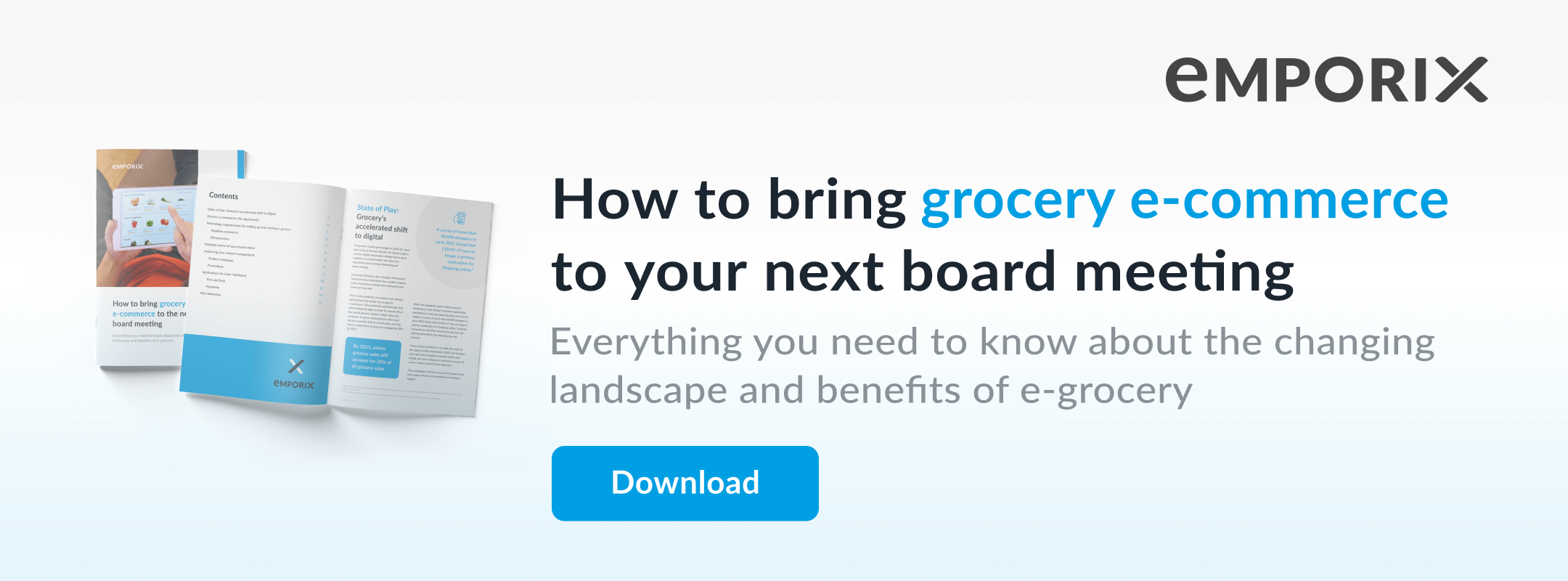The critical role of headless commerce in the future of grocery
For a traditional e-commerce business to work, it needs three key elements: an online storefront for customers to browse, a warehouse to store products, and a simple order fulfillment system to move them from A to B. For online grocery retailers, things are much more complex.
Grocers have a unique challenge when it comes to digital transformation, and there are several complicated factors that set grocers apart from traditional retailers.
- Grocers deal with very vulnerable products such as eggs and bananas, which must be packed very carefully.
- Grocers have to consider the logistics involved in shipping fresh and frozen goods.
- Grocers must also consider how weight articles and substitutions impact final basket prices.
- Online grocery delivery times are far more specific and critical to good customer service than in other sectors of e-commerce.
For the above reasons, customer trust is much harder to earn for e-grocers, and much easier to lose if things don’t go well. The sheer number of moving parts and variables makes setting up online look like a difficult challenge for many grocers, particularly small to medium-sized enterprises with a growing number of branches. Fortunately, setting up an online grocery is getting much easier thanks to innovations in headless commerce and the use of microservices.
Headless commerce: The future for online grocers
Headless commerce isn’t as complex as it might first appear. It refers to the separation between the customer-facing front-end, such as a website, and all of the back-end processes, such as the business logic and the storage of customer and product data.
But be aware that in order for cloud-native headless commerce solutions to work effectively, they must adopt microservices. Microservices are effectively small pieces of independent software designed to fulfill a very specific purpose, such as managing an online shopping cart or processing a customer payment. Those microservices can talk to one another thanks to the use of APIs, which effectively bridges that group of various software elements together.
Building a software solution made up of microservices and APIs means that a grocery business can cater individually to multiple customer touchpoints, including websites, mobile apps, payment services, online chat, email, SMS and more. If a particular touchpoint needs to be changed or updated, such as introducing a new payment system, this can be done with minimal disruption to the service as a whole. This wouldn’t be possible with an expensive, custom-built proprietary solution, which would have to go offline for maintenance, disrupting the business and inconveniencing customers.
Think carefully about your transition into e-commerce and who you partner with. Control the end-to-end shopping experience to stay competitive and retain loyal customers –from managing the product catalogue, to running promotions, taking payments, picking, packing and delivery.
Headless commerce and microservices architecture are agile and scalable development technologies that will allow you to accommodate all of these considerations, and accelerate at your own pace without any limitations.
While it’s certainly difficult for grocers to produce a flawless online customer experience, particularly compared to more traditional retailers, headless commerce and microservices are making it easier all the time. In fact, we’re likely to see more rapid adoption of headless commerce solutions throughout 2021 and beyond as more grocers explore the limitless opportunities of e-commerce.
To learn more about how Emporix can help with headless commerce, microservices and digital transformation for grocers, click here or get in touch with us by using this form.

